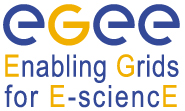Speaker
Describe the added value of the grid for your activity, or the value your tool or service adds for other grid users. This should include the scale of the activity and of the potential user community, and the relevance for other scientific or business applications.
This is multiparametric (tens of variables) optimization problem which requires a great number of independent calculations. Previously a large part of job was made manually what did not guaranteed the optimal solution. The Grid makes possible to increase a number of considered variants and a search area. The main added value is that the Grid enables the full automation of the process of finding of a suboptimal variants set. The results of this activity can be mainly used by tokamak engineers and fusion physicists reducing their manual work.
Describe the activity, tool or service using or enhancing the EGEE infrastructure or results. A high-level description is needed here (Neither a detailed specialist report nor a list of references is required).
The activity aims to automate the search of suboptimal set of tokamak’s magnetic system configurations. Tokamak is the device for hot plasma confinement. There are two variants of optimization: 1) to find a well-enough parameters of external coils for given vessel sizes and desired steady-state plasma shape; 2) to make full optimization of new tokamak’s magnetic system within given constraints on vessel and plasma shape.
Report on the impact of the activity, tool or service. This should include a description of how grid technology enabled or enhanced the result, or how you have enabled or enhanced the infrastructure for other users.
To solve these multipurpose optimization problems the authors have exploited some kind of genetic algorithm (GA). GA implies a large number of independent calculations, so it can be easily parallelized by means of grid computing. The Grid enabled to consider the total number of variants per optimization which was previously unreachable. To implement the Grid computing technique heterogeneous software has been glued by Python and Shell scripts. The resources of Russian Data Intensive Grid (rfusion VO) infrastructure have been used.




